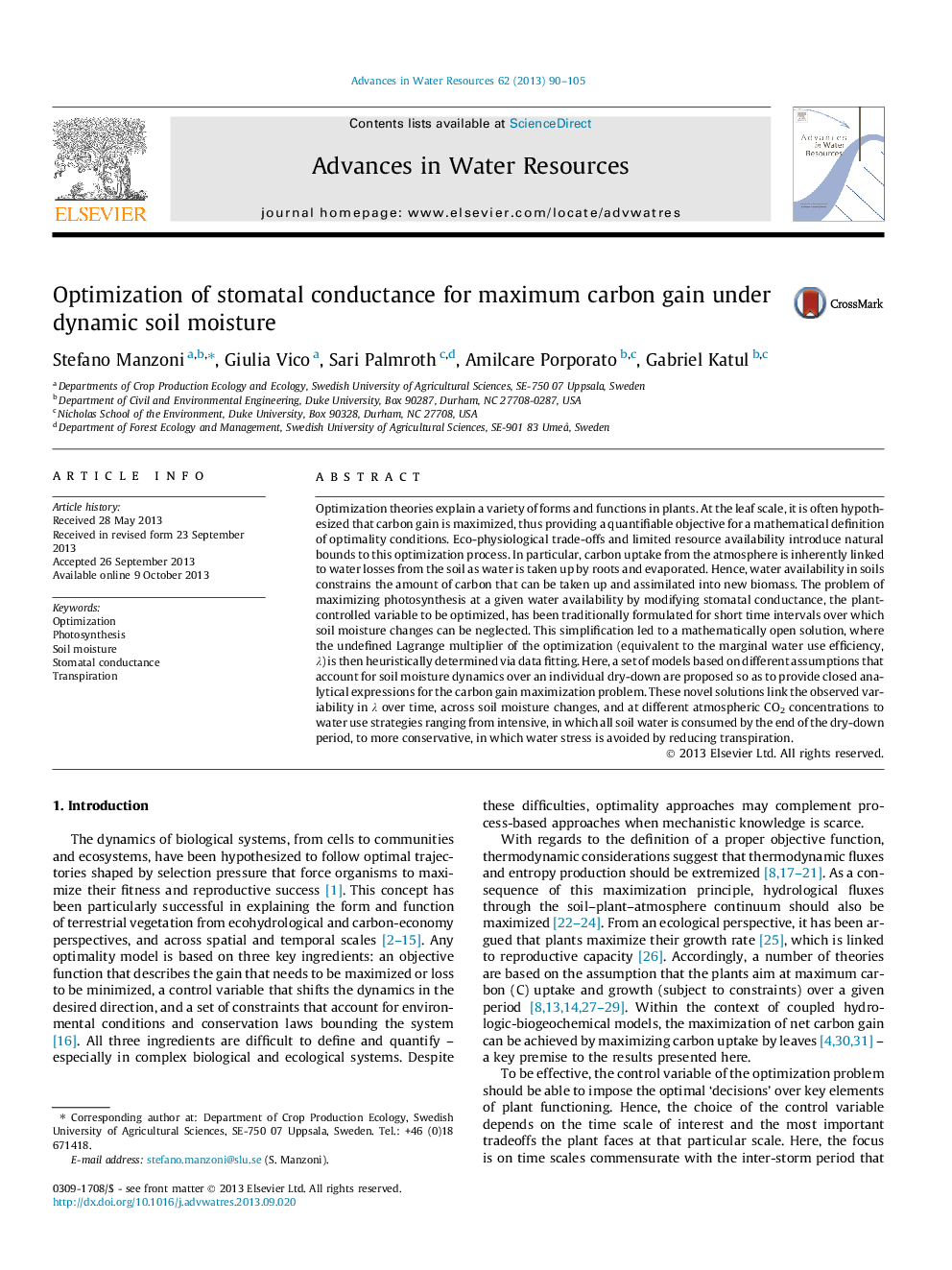| Article ID | Journal | Published Year | Pages | File Type |
|---|---|---|---|---|
| 4525637 | Advances in Water Resources | 2013 | 16 Pages |
•Stomatal optimization theories have neglected the effect of dynamic soil moisture.•Here soil moisture is considered to provide a closure for the optimization problem.•The new solutions link marginal water use efficiency to air [CO2] and soil water.•Previously inconsistent theoretical results and data are generalized and explained.
Optimization theories explain a variety of forms and functions in plants. At the leaf scale, it is often hypothesized that carbon gain is maximized, thus providing a quantifiable objective for a mathematical definition of optimality conditions. Eco-physiological trade-offs and limited resource availability introduce natural bounds to this optimization process. In particular, carbon uptake from the atmosphere is inherently linked to water losses from the soil as water is taken up by roots and evaporated. Hence, water availability in soils constrains the amount of carbon that can be taken up and assimilated into new biomass. The problem of maximizing photosynthesis at a given water availability by modifying stomatal conductance, the plant-controlled variable to be optimized, has been traditionally formulated for short time intervals over which soil moisture changes can be neglected. This simplification led to a mathematically open solution, where the undefined Lagrange multiplier of the optimization (equivalent to the marginal water use efficiency, λλ) is then heuristically determined via data fitting. Here, a set of models based on different assumptions that account for soil moisture dynamics over an individual dry-down are proposed so as to provide closed analytical expressions for the carbon gain maximization problem. These novel solutions link the observed variability in λλ over time, across soil moisture changes, and at different atmospheric CO2 concentrations to water use strategies ranging from intensive, in which all soil water is consumed by the end of the dry-down period, to more conservative, in which water stress is avoided by reducing transpiration.
